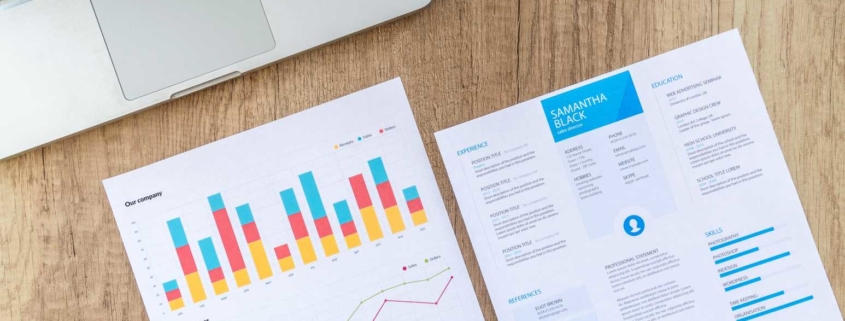How to write the Perfect Resume
Well, the title is a bit cheeky as there really is no such thing!
You can ask ten different people and get ten completely unique opinions on what sets a resume apart from the rest. Every hiring manager, recruiter and HR consultant will also have their own opinion.
That being said, there are some basics that you really do need to follow:
Resume Tip 1: Name and contact information
Your name and contact information needs to be in the header – so it shows on every page. And, yes, some people still forget to do this, leaving a hapless recruiter with a page on their desk and no clue as to who it belongs to! In this day and age your details should include your first and last name, cell number, email address and, ideally, a (working) hyperlink to your LinkedIn profile.
Or, if you want to get fancy you can add a footer to page 2 with your name and contact details.
If you write a summary – which is a good idea – make it clear and succinct. And I do mean clear and succinct!
I don’t know how many times I’ve read a summary that seemed more like a novella with every keyword under the sun and no clear insight as to what the person actually does.
Resume Tip 2: Format (Functional, Chronological or combination of the two)
They are all valid choices and it comes down to personal taste or style – or perhaps one style fits your experience better than the other. For instance if your work is more project based you may opt for a functional (or skills based) resume. If your positions have been more conventionally focused you may opt for a chronological resume.
Personally, I find that purely functional resumes can be a bit frustrating to read. You may understand this if you consider how many resumes a recruiter or hiring manager has to read when searching to fill a position – so have mercy!
While all the projects and skill-sets are listed in great detail and frequently followed by a chronological list of employers, there is often no indication of what the candidate did while working for each employer – just a list of dates and company names.
I find it incredibly helpful when a candidate that’s used a functional format provides at least a couple of lines highlighting their role beneath each position. Otherwise it can be very difficult to know which skills are most current.
Resume Tip 3: Grammar and spelling
I cannot stress this enough – edit, edit, edit!
Remember, “spell check” cannot tell you if you have written the wrong word if it’s spelled correctly.
I think it helps tremendously to read your resume aloud, word for word, and then have someone else read it to you. (You may have to provide enticements for this – doughnuts, beer, whatever works!)
Resume Tip 4: How many pages should my resume be?
Again, there are a lot of opinions about this. Convention says that your resume should be no more than two pages. I’m actually a bit flexible but would raise an eyebrow if a resume is more than three pages.
If you’re extremely technical and have a sleeve-length list of certifications you may want to add an addendum to your resume. An additional page that only highlights your education and certifications – no sneaking work experience on to this page! If you’re work has been project based, you may want to also have an addendum providing more in-depth detail.
Resume Tip 5: Clarity, clarity, clarity!
Take your time and remember that your resume will serve as a first impression – of you. A winning resume includes all the elements listed above, but most of all, it’s a resume that hiring managers and recruiters will enjoy reading!
Now that you have your resume in better shape, why don’t you test it by checking our available jobs and applying for a few?




Leave a Reply
Want to join the discussion?Feel free to contribute!